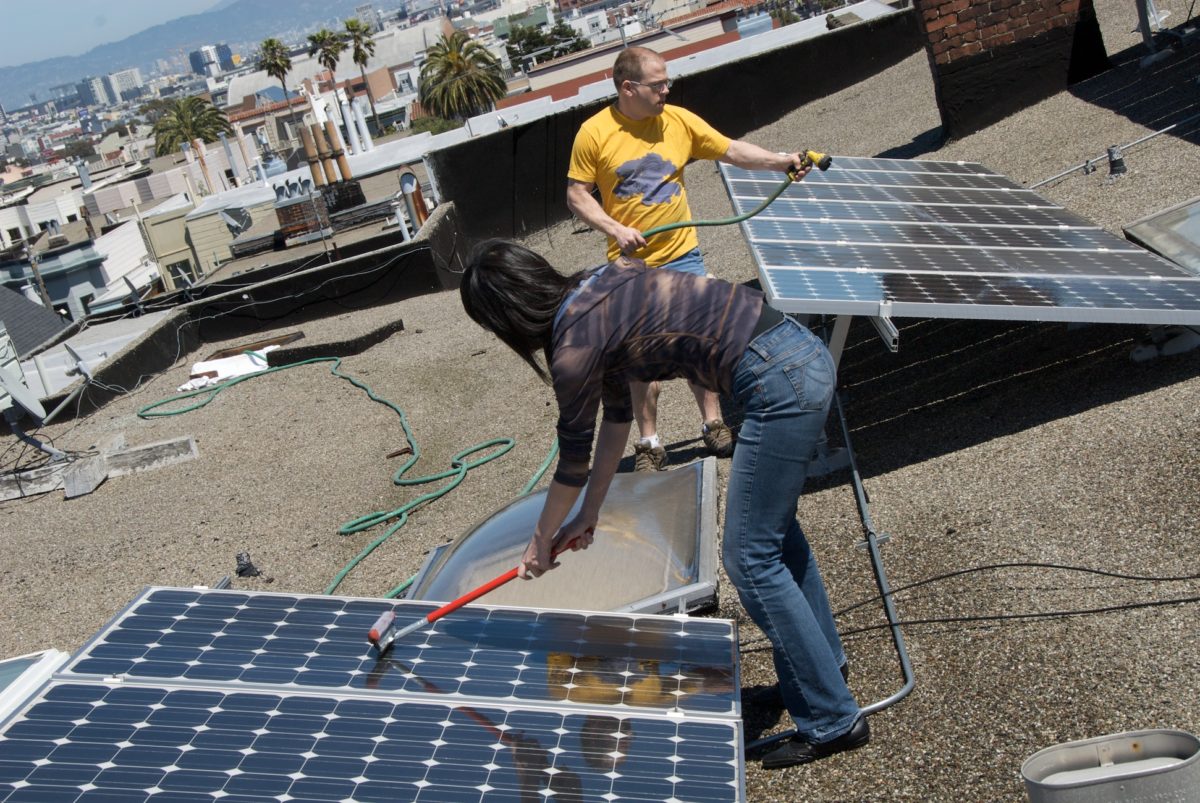
French researchers have developed a machine-learning model to clean low-power PV projects and standalone solar arrays in rural areas isolated from the grid.
Scientists from France’s Sorbonne Université, the École Normale Supérieure de Rennes (ENS Rennes), and the University of Paris-Saclay have proposed a new machine-learning technology designed to facilitate the scheduling of PV module cleaning operations.
The technology was conceived for low-power solar projects and standalone PV arrays in rural areas without grid connections. In such locations, a lack of maintenance can result in degraded performance, damages, or abandonment.
The academics said they aim to fill a gap highlighted in past research projects. Especially in remote areas, the efficiency of solar panels in standalone systems can degraded by 6% over the course of a day and up to 18% over a period of month if dust is not regularly cleaned off the modules.
“The quantification of soiling is crucial since it allows to compute economically optimal intervals for cleaning interventions,” the researchers said.
The scientists described the tech as a low-cost solution. “It uses signals already monitored in stand-alone solar installations and requires low cost sensors” researcher Matthias Heinrich told pv magazine.
Manual cleaning
The proposed technology is based on a binary classifier for cleaning detection that relies on low-cost temperature, voltage, and current sensors. The team tested different classifiers by using labeled datasets provided by a remote solar water pumping system in a rural village in Burkina Faso.
The standalone system is based on a 620 W solar array, a motor pump equipped with an inverter featuring maximum power point tracking (MPPT), and a water tank measuring 11.4 m3. Cleaning operations are usually executed manually and are more frequent throughout the dry season, from November to May, than during the April-October wet season.
Popular content
“Manual cleaning with water is used because it is a good compromise between costly water jets and low efficiency dry manual cleanings,” the researchers said. “As water is a low-cost solvent, no demineralized water neither costly detergent is used.”
They built a dataset by conducting cleaning operations. These were evenly distributed from 6:00 a.m. to 6:00 p.m. over a 10-day period, with cleaning performed on a daily basis involving cleanings spaced apart in 20-minute intervals. The researchers assessed 57 cleaning sessions, including 34 in pumping mode and 23 with no pumping activity.
Random forest
The researchers implemented several machine-learning models to extract features of the signals for a temporal resolution below 300 seconds. The most accurate machine-learning technology is based on a random forest model combined with module temperature, array voltage, and current signals. This model provided the most accurate classifier, with a 95% accuracy rate.
“This demonstrates that only a few signals (array current and voltage, module temperature) must be monitored with a relatively low temporal resolution (300 s i.e. a frequency of 3.5 mHz) to get a good picture of the regular care of a remote photovoltaic installation and of its soiling state,” the academics said.
The random forest is a supervised learning algorithm that can produce decision trees on data samples, make predictions from each of them, and then select the most-voted predictions as the final result. It is known to provide high accuracy, while running efficiently on large databases and estimating which variables are important in classification, among other things.
“The final objective is to propose solutions to companies which allow them to improve the maintenance of PV arrays in rural areas,” Heinrich said. “To fulfill this objective, we are currently working on the robustness and the reliability of our model.”
The researchers presented their findings in “Detection of cleaning interventions on photovoltaic modules with machine learning,” published in Applied Energy.
"machine" - Google News
September 03, 2020 at 08:19PM
https://ift.tt/2YXCuJp
Machine-learning for PV module cleaning – pv magazine International - pv magazine International
"machine" - Google News
https://ift.tt/2VUJ7uS
https://ift.tt/2SvsFPt
Bagikan Berita Ini














0 Response to "Machine-learning for PV module cleaning – pv magazine International - pv magazine International"
Post a Comment